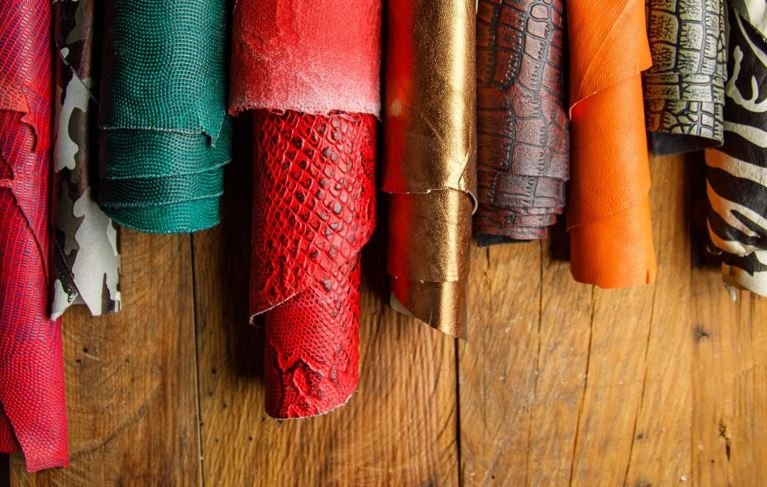Croc-embossed leather is a stunning and sophisticated material that has gained popularity in fashion and home décor. This article explores the fascinating process of leather embossing, various embossing techniques, and how artisans can apply this unique style to different animal hides.
Artisans create croc-embossed leather by pressing a design that mimics crocodile scales into genuine leather. This technique enables them to achieve the luxurious look of crocodile leather without using real hides, making it a more affordable and ethical option for consumers.
Why Choose Croc Embossed Leather?
The appeal of croc embossed leather lies in its unique texture and visual interest. It provides a high-end look that is perfect for luxury items like handbags, wallets, and accessories. Additionally, because it is made from genuine leather, it retains the durability and quality that leather is known for.
The Process of Leather Embossing
Leather embossing involves several steps to create beautiful and intricate designs:
1. Selecting the Leather
The first step is to choose the right type of leather. For croc-embossed leather, genuine leather is typically used, which can come from cows, goats, or other animals. Each type of leather has its unique characteristics that can affect the final look.
3. Creating the Design
For croc-embossed leather, this plate will feature the distinct scale pattern associated with crocodile skin.
4. Embossing the Leather
The next step involves using a machine that applies both heat and pressure to press the design into the leather. This process creates the raised texture that defines croc-embossed leather. The heat helps to set the design, ensuring it lasts over time.
5. Finishing Touches
After the embossing is complete, the leather may be dyed or treated to enhance its color and durability. This final step can add depth and richness to the embossed design.
Types of Leather Embossing
Leather embossing can be done in various ways, each offering unique effects and styles:
1. Blind Embossing
Blind embossing involves pressing a design into the leather without adding any color or foil. This creates a subtle, raised effect that is elegant and understated. It’s often used for branding, such as logos on wallets and journals.
2. Foil Embossing
Foil embossing combines the embossing process with a metallic foil application. This results in a shiny, eye-catching design.
3. Debossing
Debossing is similar to embossing, but instead of raising the design, it creates an indented pattern on the leather. This technique can add a unique, textured look, making it perfect for custom items like belts or keychains.
4. Croc Embossed Leather
As previously mentioned, croc-embossed leather features a design that mimics the scales of crocodile skin. This technique allows consumers to enjoy the luxurious appearance of exotic leather at a fraction of the cost. It is widely used in fashion and accessories.

5. 3D Embossing
3D embossing creates multi-dimensional designs on the leather surface. This advanced technique allows for intricate and artistic patterns, making it a popular choice for custom crafts and unique pieces.
Advantages of Croc Embossed Leather
Choosing croc-embossed leather comes with several benefits:
- Aesthetic Appeal: The distinct scale pattern adds sophistication and elegance to any item.
- Affordability: Croc-embossed leather provides the luxurious look of exotic skin without the high cost.
- Durability: Being made from genuine leather, it is strong and can withstand regular use.
- Versatility: Designers can use this style in a variety of products, from handbags to furniture, making it a versatile choice.
Embossing on Different Types of Animal Hides
1. Cowhide
Cowhide serves as the most common choice for embossed leather. Its thickness and durability make it ideal for creating sturdy products. The smooth surface of cowhide supports clear and crisp designs, making it perfect for crafting croc-embossed leather.
2. Goatskin
Goatskin is softer and more flexible than cowhide. It is great for items that require pliability, such as gloves or small bags. The natural texture of goatskin can enhance the look of embossed designs, providing a unique finish.
3. Sheepskin
While it may not be as durable as cowhide, it is perfect for plush accessories and items like throws. The embossed designs on sheepskin can create beautiful contrasts that add to its appeal.
4. Deerskin
Deerskin is lightweight and incredibly soft, making it a popular choice for clothing and accessories. The unique grain pattern of deerskin can add character to embossed designs, making them more visually interesting.
Finding the Right Leather Store
Here are some tips for finding the best leather store:
1. Quality Products
Look for stores that offer high-quality leather. Sourcing genuine leather from reputable suppliers ensures durability and a beautiful finish.
2. Wide Selection
Choose stores that have a diverse selection of leather types, including croc-embossed leather and other exotic options. This variety allows you to find the perfect material for your project.
3. Knowledgeable Staff
Find stores with staff who are knowledgeable about leather and embossing techniques. They can provide valuable information and help you choose the right materials.
4. Customer Reviews
Read customer reviews to get an idea of the store’s reputation. Positive feedback from other buyers can indicate a reliable source for your leather needs.
To get more business news you can click here.
Conclusion
Croc embossed leather is a remarkable material that combines beauty and craftsmanship. With various types of leather embossing techniques available, including blind embossing, foil embossing, and 3D embossing, there is something to suit every taste.




